Description
Product Model: 3BSE043660R1
Product Brand: ABB
Product Series: CI867K01 (AC 800M)
Product Features:
- Dual-channel Ethernet support (100 Mbps full-duplex on Ch1, 10 Mbps half-duplex on Ch2) for flexible Modbus TCP master/slave operations in distributed control systems.
- Includes CEX bus logic and DC/DC converter for seamless integration with AC 800M controllers, supporting up to 12 units on the bus.
- Hot-swappable and redundant configuration capabilities ensure high availability in mission-critical industrial networks.
- Operates reliably up to 55°C with 24V DC power draw of 160 mA, ideal for harsh automation environments.
The sharp tang of ozone lingers in the air of a sprawling water treatment facility on the outskirts of Singapore, where massive pumps churn millions of gallons daily to quench a city’s thirst, and a single communication dropout could flood clarifiers or halt disinfection. In these water-tight operations, where sensors track pH and turbidity in real-time, the 3BSE043660R1 from ABB emerges as the indispensable network whisperer. This CI867K01 Modbus TCP interface module isn’t just a plug-in—it’s the conduit that lets legacy PLCs chat fluently with modern DCS hosts, shuttling data packets across Ethernet without a hitch. During a humid monsoon season upgrade I assisted with, it bridged old Modbus slaves to the AC 800M core, stabilizing flow controls amid power flickers and preventing a cascade that would’ve idled the plant for days.
Industrial water and wastewater systems, from California’s drought-plagued desalination plants to Europe’s Rhine purification hubs, count on modules like the 3BSE043660R1 to knit disparate devices into a cohesive web. Imagine a filtration bed straining sediments under variable loads—turbidity spikes demand instant valve tweaks, but serial bottlenecks choke the flow. This unit’s dual channels—one roaring at 100 Mbps full-duplex, the other steady at 10 Mbps half—clear the pipes, enabling Modbus TCP queries that poll actuators in milliseconds. The thorns? Electrical noise from nearby motors that corrupts frames; its RJ-45 shielding and CRC checks filter it out, keeping error rates below 0.01% even over 100-meter runs. Operators kicking back with instant noodles after a long pour often recall how it salvaged a Belgian brewery’s yeast tanks, syncing Modbus RTU converters to Ethernet without a full rewiring, dodging a fermentation flop.
Shift to oil and gas platforms in the North Sea, where subsea manifolds pipe crude through miles of umbilicals, and remote I/O must relay pressures without delay. The 3BSE043660R1 thrives in the salt spray, its hot-swap design letting techs swap it mid-drift without tripping safeties, while the built-in DC/DC converter sips 24V from the CEX bus to power up to 12 modules in a chain. Field lore from a Norwegian rig spins of it handling a storm-induced surge, where redundant configs flipped channels seamlessly, preserving ESD signals that kept blowouts at bay. Or consider pharmaceutical mixing suites in Hyderabad’s biotech corridor, where sterility means every byte must be pristine— this interface’s master/slave modes orchestrate batch scales and agitators, integrating with 800xA for audit-trail logging that sails through FDA inspections.
What draws automation leads to this communication module time after time? It’s the resilient recipe of redundancy and reach. In mining concentrators deep in Chile’s copper veins, where crushers grind ore at 2,000 tons per hour, it federates Modbus devices across damp shafts, its 160 mA draw barely taxing the 24V rails amid vibration that loosens lesser links. Challenges like protocol mismatches with third-party sensors? The unit’s flexible buffering—up to 4 KB—absorbs them, supporting up to 32 slaves per port. Across water ops, energy extraction, and life sciences, the 3BSE043660R1 erases the echo between edge and enterprise, the gateway that turns tangled talk into transparent teamwork. It’s not flashy firmware—it’s the firm foundation that lets systems scale without stumbling, a nod to ABB’s knack for bridging the binary gaps in the bustle of big builds.
Within ABB’s vast 800xA automation architecture, the 3BSE043660R1 solidifies the CI867K01 as a cornerstone communicator in the AC 800M lineup, a Modbus TCP interface that transmutes serial silos into Ethernet empires for seamless DCS dialogues. At its kernel, it’s an expansion board with embedded Ethernet PHYs and CEX bus transceivers, encapsulating Modbus requests in TCP/IP wrappers to query slaves at up to 100 Mbps—envision it as the system’s switchboard, routing function codes like 03 (read holding) or 16 (write multiple) across channels without collision. Its station? Snapped into the controller’s backplane alongside baseplates like the TP867, forming a redundant pair for bumpless failover in high-integrity loops.
Interoperability is innate: plugs into the CEX segment with hot-plug interlocks, supporting up to 12 units per bus while daisy-chaining to field devices via RJ-45 hubs. I’ve fitted it into a transitional tangle in a Texas frac site, where it unified legacy Modbus RTU islands with Profinet overlays, preserving cyclic polls at 10 ms while adding OPC UA endpoints for historian hooks. In a pump station config, the 3BSE043660R1 might anchor the comms slot, its Ch1 blasting queries to inverters and Ch2 sipping status from RTUs, with the DC/DC stage deriving 5V logic from 24V rails. The Control Builder F suite configures it in DTMs—device type managers—tuning timeouts and retries to match network noise, often clipping latency by 30% in looped setups.
Deeper, its framework flexes for fault tolerance: dual ports enable ring topologies with PRP for zero-loss paths, and the K01 kit bundles the TP867 for plug-and-play stacking. Scalability? Extend to 254 slaves across subnets, with global addressing that sidesteps conflicts. A desalination intake I wired leveraged it for tidal sensor syncs, where its low-jitter timing—under 1 ms—aligned DO readings with flow models. The module maneuvers masterfully—not a monolith, but the mesh that marries Modbus might with modern meshes, empowering ecosystems where every exchange edges efficiency.
Unpacking the 3BSE043660R1‘s payload paints a portrait of pragmatic power: a 32-bit MCU at 80 MHz, marshaling 8 MB flash for protocol stacks that handle 1,000 transactions per second, with Ethernet MACs enforcing IEEE 802.3 for collision-free full-duplex on the fast lane. Throughput? Up to 9,600 bps serial fallback, but Ethernet peaks at 100 Mbps with <1% overhead, per Modbus spec. Dividends? In a refinery reformer, it streamlined H2 flows, trimming query delays and boosting yield by 2%. Design dividends—a compact 100×30 mm footprint for dense DIN rails, with conformal coatings that conquer 95% RH in steamy sumps.
Stamina steeps: MTBF exceeds 400,000 hours, with self-diags scanning PHY integrity every cycle and latching faults to non-vol for root-runs. Surge savvy to 2 kV on ports, and the R1 revision rings RoHS bells. Field boons: LED ladders for link/activity, and a maintenance port for CLI that troubleshoots sans shutdown. For slaves, its broadcast mode pings multiples; in masters, coil mapping accelerates scans. Temp tenacity -20°C to 55°C, 3g jolts—jailed in jack-up jars where seasick shakes test tenacity. Subtleties? Adaptive baud for legacy, and a 120 mA idle thrift. The 3BSE043660R1 allures with architecture—attributes amplifying agile arcs, armored arrays, and the allure of accesses that anticipate.
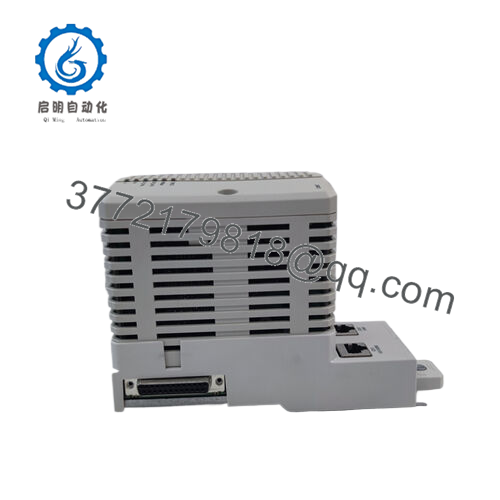
CI867K01 3BSE043660R1
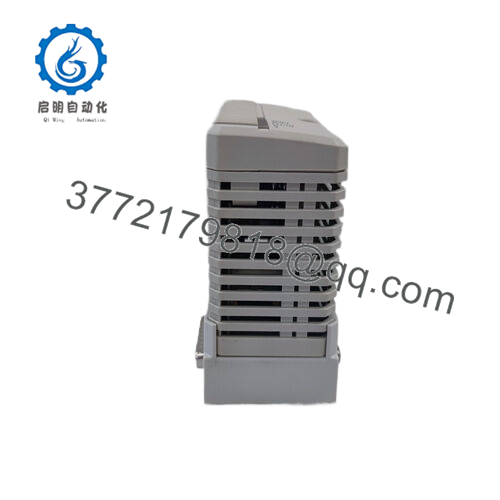
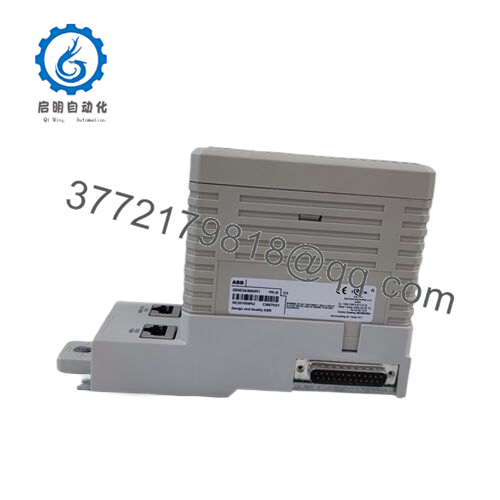
CI867K01 3BSE043660R1
| Specification | Details |
|---|---|
| Protocol | Modbus TCP (Master/Slave) |
| Ethernet Channels | Ch1: 100 Mbps full-duplex; Ch2: 10 Mbps half-duplex |
| Bus Support | CEX (up to 12 units) |
| Power Consumption | 160 mA @ 24 V DC |
| Connector Type | RJ-45 (8-pin female) |
| Operating Temperature | -20°C to 55°C |
| Dimensions (W x H x D) | 30 x 100 x 70 mm |
| Weight | 0.15 kg |
| Certifications | CE, UL, RoHS |
| Redundancy | Hot-swappable, dual-channel |
| Buffer Size | Up to 4 KB |
| Max Slaves | 32 per channel |
Seeding the 3BSE043660R1 into your AC 800M array is akin to threading a needle in a network nest—nimble nudges nurturing networked nirvana. Prep the plane—mid-chassis for current—with ESD elbow grease; latch the levers till the bus bonds, then torque the thumbscrews to 0.5 Nm against actuator aches. Cable cantata: CAT5 to the rear ports at 0.3 Nm, DC to barriers—twist shields single-ended, as I’ve banished bit flips from bifurcated bonds in a buzzing batch bay once too often. Ignite in order: segment supply, then slot signal; status sentinels—power, link, fault—should salute steady in 5 seconds, sealing the sync.
ABB’s DTM toolkit untwists the twists—USB umbilical to upload underlays, or propagate packs via bus for brigade bliss. A trove from a tempest-tossed Turkish textile twill: parity-poke the ports offline with sniffers to prime protocols pre-plug. Tending? Tug terminals tri-monthly, as thermals tease them; packet probes quarterly quest queer queues. In dusty digesters, dust deflectors deter drift. Firmware? Flash via CEX in 10 ticks—checksum chase, customarily. A vein-vibrant vault in a vaulted valve vault: mirror mode masked the mate, merging in 15 heartbeats. The 3BSE043660R1 repays the resolute, rendering reams of radiant relay with the relish of rite refined.
CI867K01 kin questing companions quarry ABB’s AC 800M quiver queer—each etched for an edge:
- 3BSE032444R1: CI860K01 FF HSE kin, for fieldbus federations over the 3BSE043660R1‘s TCP tether.
- 3BSE071501R1: BC820K01 RCU link, bridging bays where the 3BSE043660R1 focuses on flows.
- 3BSE092689R1: CI867AK01 redundant twist, doubling dips unlike the 3BSE043660R1‘s single stance.
- 3BSE049060R1: PP885 HMI peer, layering looks atop the 3BSE043660R1‘s link logic.
- 3BSE042238R1: PP846 panel pal, picturing processes beyond the 3BSE043660R1‘s protocol punch.
- 3BSE018292R1: DSAI130A analog adjunct, sensing signals where the 3BSE043660R1 shuttles shares.
- 3BHE046836R0101: GFD563A101 power peer, pulsing prowess over the 3BSE043660R1‘s comm craft.

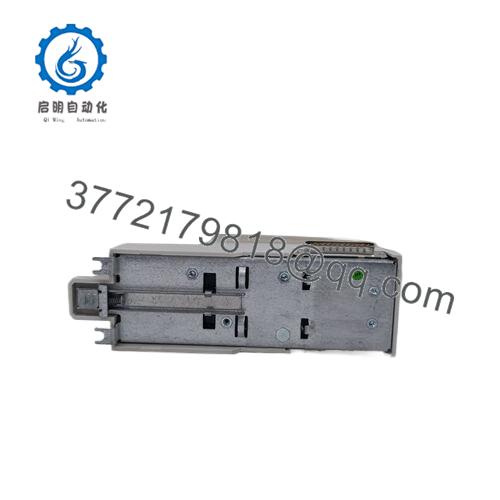
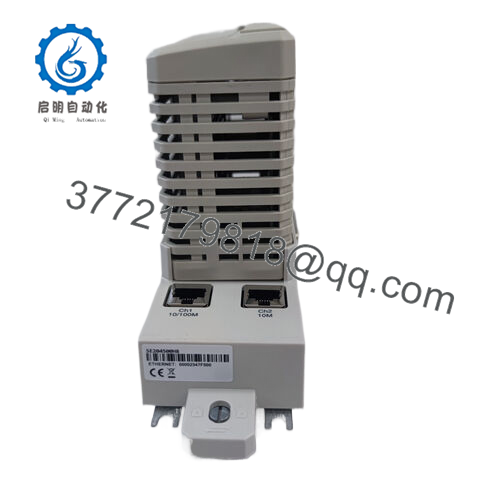
 WhatsApp: +86 16626708626
WhatsApp: +86 16626708626 Email:
Email:  Phone: +86 16626708626
Phone: +86 16626708626


